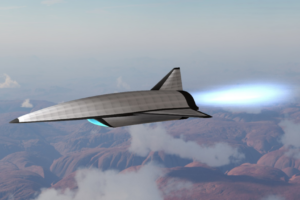“Reaching for the Stars: How NASA Science Impacts Your Daily Life in Ways You Never Imagined” As you go about your daily routine, checking your phone for weather updates, snapping stunning photos with your smartphone, or enjoying a warm cup of coffee on a chilly morning, have you ever stopped to think about the unsung heroes behind these modern conveniences? Look no further than NASA, the pioneering space agency that has been pushing the boundaries of human knowledge and innovation for over six decades. While their groundbreaking achievements in space exploration often grab the headlines, the profound impact of NASA science on our everyday lives is often overlooked. From the technology that powers our smartphones to the life-saving breakthroughs in medicine, NASA’s scientific pursuits have far-reaching consequences that touch every aspect of our daily existence. In this article, we’ll delve into the fascinating ways in which NASA science improves your life, and explore the surprising benefits that trickle down from the vast expanse of space to your doorstep. Buckle
Understanding the Impacts of Climate Change on Marine Ecosystems
NASA’s research on marine ecosystems plays a vital role in understanding the far-reaching impacts of climate change on our planet’s oceans. One of the most critical aspects of this research is the study of microscopic life in the ocean, which has a significant influence on the entire ecosystem. NASA’s Plankton, Aerosol, Cloud, ocean Ecosystem (PACE) satellite, launched in 2024, has been instrumental in advancing our understanding of these issues.
The PACE satellite collects data on microscopic life in the ocean and particles in the air, providing valuable insights into the health of fisheries, harmful algal blooms, air pollution, and wildfire smoke. By investigating how the ocean and atmosphere interact with each other and are affected by a changing climate, scientists can better comprehend the complex relationships within these ecosystems.
A striking example of PACE’s capabilities is an image taken on May 4, 2024, which showcases the mission’s ability to study various elements represented in the PACE acronym. The image features blooms of phytoplankton off the coast of West Africa, tan dust aerosols blowing over the Atlantic Ocean, and white clouds dotted across the ocean, complete with distinctive von Kármán vortices to the southwest of the Canary Islands. Minerals carried within the dust deliver key nutrients, such as iron, to sustain life at the base of the ocean ecosystem.
Combating Air Pollution and Wildfire Smoke
The Role of NASA Research in Improving Air Quality
NASA’s research has been instrumental in combating air pollution and wildfire smoke, two significant threats to human health and environmental sustainability. By leveraging cutting-edge technology and scientific expertise, NASA has developed innovative strategies to improve air quality and mitigate the impacts of air pollution.
One of the primary ways NASA contributes to improving air quality is through the development of advanced sensors and monitoring systems. These systems enable scientists to track air pollution in real-time, providing critical data for policymakers and researchers working to reduce pollution levels.
Developing Effective Strategies for Managing Wildfires
NASA’s research has also focused on developing effective strategies for managing wildfires, which are becoming increasingly frequent and destructive due to climate change. By analyzing satellite data and using advanced modeling techniques, scientists can identify areas at high risk of wildfires and develop targeted strategies for prevention and mitigation.
For example, NASA’s satellite data has been used to track wildfires in real-time, providing critical information for firefighters and emergency responders. This data has also been used to develop predictive models of wildfire behavior, enabling scientists to identify areas at high risk of wildfires and develop targeted strategies for prevention and mitigation.
Exploring the Benefits of Space Research for Environmental Sustainability
How NASA Science Can Inform Environmental Policy and Practice
NASA’s space research has far-reaching implications for environmental sustainability, providing critical data and insights that can inform environmental policy and practice. By leveraging NASA’s research and expertise, policymakers and researchers can develop more effective strategies for addressing environmental challenges and promoting sustainability.
One of the primary ways NASA’s research informs environmental policy and practice is through the development of data-driven decision-making tools. These tools enable policymakers and researchers to make more informed decisions about environmental issues, leveraging NASA’s expertise in data analysis and modeling.
The Role of Space-Based Research in Developing Sustainable Solutions
NASA’s space-based research plays a critical role in developing sustainable solutions to environmental challenges. By leveraging the unique perspective of space, scientists can gain a deeper understanding of the Earth’s systems and develop more effective strategies for promoting sustainability.
For example, NASA’s satellite data has been used to track deforestation and land use changes, providing critical information for policymakers and researchers working to promote sustainable land use practices. This data has also been used to develop predictive models of environmental change, enabling scientists to identify areas at high risk of environmental degradation and develop targeted strategies for mitigation.
NASA’s Quest to Explore and Understand the Universe
Unlocking the Secrets of the Cosmos
NASA’s research has been instrumental in unlocking the secrets of the cosmos, providing critical insights into the nature of the universe and our place within it. Two of the most significant contributions to this research have been the James Webb Space Telescope and the Hubble Space Telescope.
The James Webb Space Telescope has been instrumental in advancing our understanding of the universe, providing unparalleled insights into the formation of stars and galaxies. The telescope’s advanced instrumentation has enabled scientists to study the universe in unprecedented detail, gaining a deeper understanding of the cosmos and our place within it.
The Hubble Space Telescope has also played a critical role in advancing our understanding of the universe, providing stunning images and critical data on the formation and evolution of the cosmos. The telescope’s legacy of discovery has been instrumental in shaping our understanding of the universe, and its continued operation has ensured that scientists remain at the forefront of cosmic research.
The Importance of Exploring the Universe
NASA’s space exploration efforts are critical to advancing our understanding of the universe and promoting scientific breakthroughs. By pushing the boundaries of human knowledge, scientists can gain a deeper understanding of the cosmos and our place within it, driving innovation and discovery.
One of the primary ways that NASA’s space exploration efforts promote scientific breakthroughs is through the development of new technologies and instrumentation. By pushing the boundaries of what is possible, scientists can develop new tools and techniques that enable further research and discovery.
The Future of NASA’s Space Exploration Plans
NASA’s space exploration plans are focused on advancing our understanding of the universe and promoting scientific breakthroughs. Upcoming missions, such as the VERITAS and DAVINCI missions to Venus, will provide critical insights into the formation and evolution of the cosmos.
The role of private-sector partnerships will be instrumental in advancing NASA’s space exploration agenda, providing critical funding and expertise for future missions. By leveraging the strengths of both government and private industry, NASA can ensure that its space exploration efforts remain at the forefront of scientific research and discovery.
Conclusion
In conclusion, NASA science plays a vital role in advancing our understanding of the universe, improving our daily lives, and driving innovation. By exploring the vast expanse of space, NASA scientists and engineers are able to develop new technologies, monitor Earth’s climate and natural resources, and uncover the secrets of the human body. The concrete benefits of NASA’s research and development are undeniable, from the satnavs in our cars to the medical devices that save lives.
As we look to the future, the implications of NASA’s work are profound. As we continue to push the boundaries of space exploration, we will unlock new discoveries that can benefit humanity as a whole. The next generation of scientists, engineers, and innovators will build upon the foundation laid by NASA’s pioneers, driving progress in areas such as sustainable energy, climate change mitigation, and human health. As we venture further into the unknown, we will not only expand our knowledge of the universe but also enhance our capacity to address the complex challenges facing our planet.
As we gaze up at the stars, we are reminded of the infinite possibilities that await us. The future of space exploration is not just a noble pursuit, but a necessity – a testament to humanity’s unyielding curiosity and its capacity to shape its own destiny. As we continue to explore the vast expanse of space, we are not just advancing our knowledge, but also the very fabric of our existence. And so, as we look to the stars, we are reminded that the boundaries of what is possible are limitless, and that the wonders of NASA science will continue to inspire and transform our world for generations to come.




Add Comment